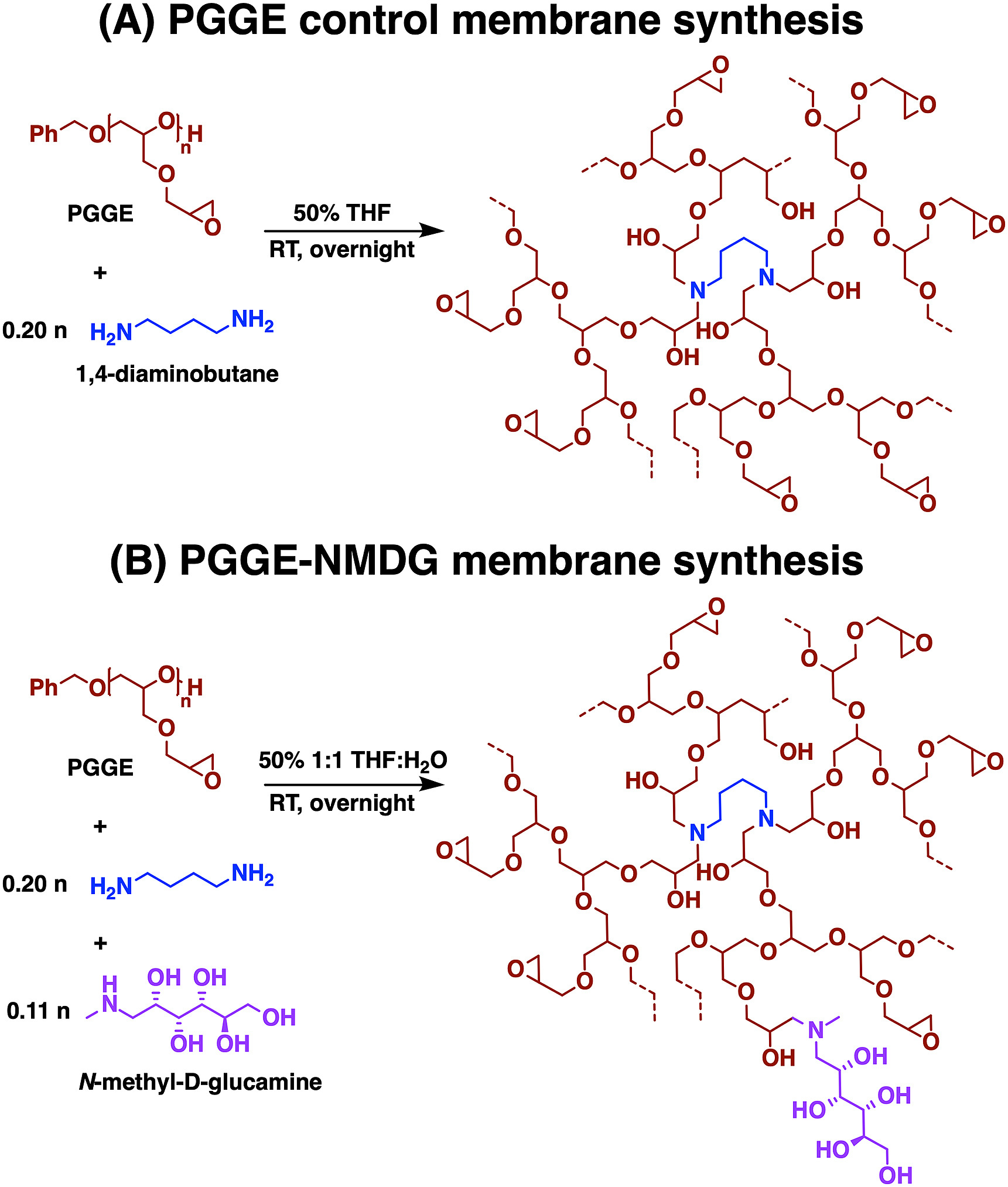(75e) Modular Synthesis of Functional Membranes: Boric Acid Removal from Wastewater
AIChE Annual Meeting
2022
2022 Annual Meeting
Materials Engineering and Sciences Division
Polymer Synthesis and Reaction Engineering
Monday, November 14, 2022 - 9:15am to 9:30am
Utilizing epoxide ring-opening chemistry provides a versatile methodology for synthesizing macromolecular constructs such as polymer membranes with the capability for functionalization. Specifically, epoxy-amine reactivity can be used to chemically cross-link epoxide groups with diamine functionalities as well as attach specific amine-containing moieties to the polymer membrane framework. In this work, we synthesized boron-selective membranes based on a modular epoxy-amine cross-linked poly(glycidyl glycidyl ether) (PGGE) platform functionalized with N-methyl-d-glucamine (NMDG), a polyol known to be selective for boron. Conventional desalination membranes for boron removal often require multiple treatment stages for applications such as irrigation, where the concentration of boron at maximum is limited to 1.0 mg/L. Boric acid, the dominant form of boron at neutral pH, is small and uncharged, limiting the efficacy of current wastewater treatment processes such as reverse osmosis. Unfunctionalized PGGE and PGGE-NMDG membranes exhibited boron sorption isotherms that were consistent with dual mode sorption. PGGE-NMDG membranes sorbed 2.5 mmol B/g dry polymer from a 100 mmol B/L aqueous solution, which was approximately three times the adsorption capacity of a commercial boron-selective resin, Amberlite IRA743. The membranes were regenerated in 1.0 M HCl and exhibited no significant loss of boron sorption capacity over four cycles. NMDG and PGGE sites (i.e., unreacted epoxides and ethers present in both membrane types) affected boron diffusion in the material. Ligand-functionalized membranes to capture specific solutes such as boron and potentially other contaminants require high loading of selective sites to maximize polymer-solute interactions while not sacrificing synthetic simplicity. Understanding the fundamental structure-property relationships for these functionalizable polyether membranes could lead to new and improved material designs utilizing other specific ligands for targeted solute water purification applications.


